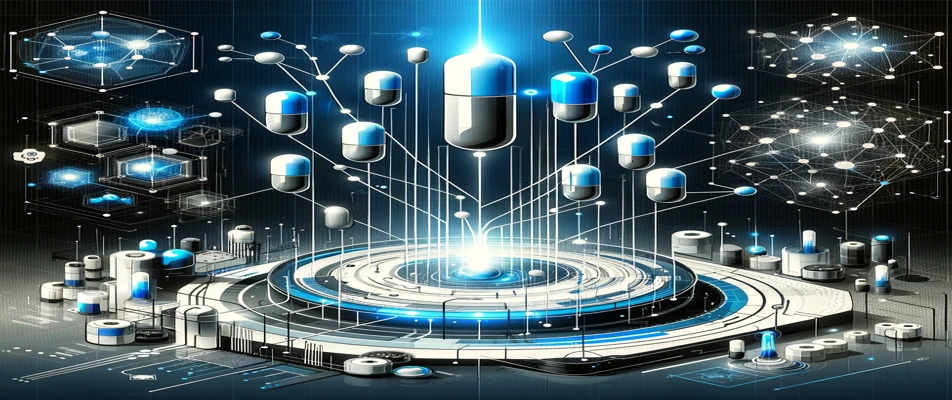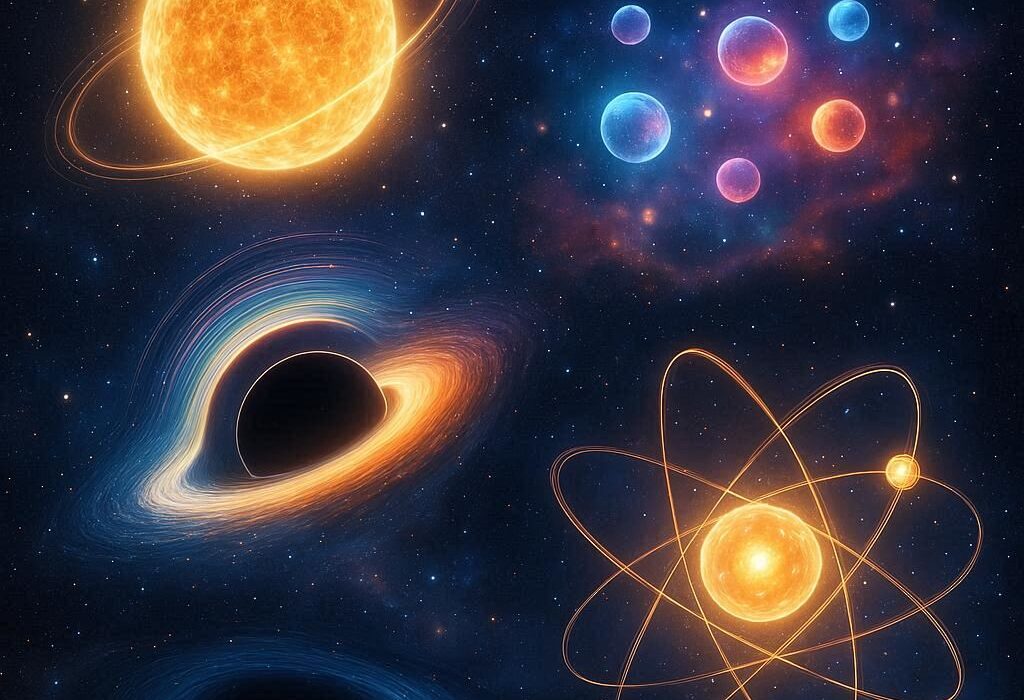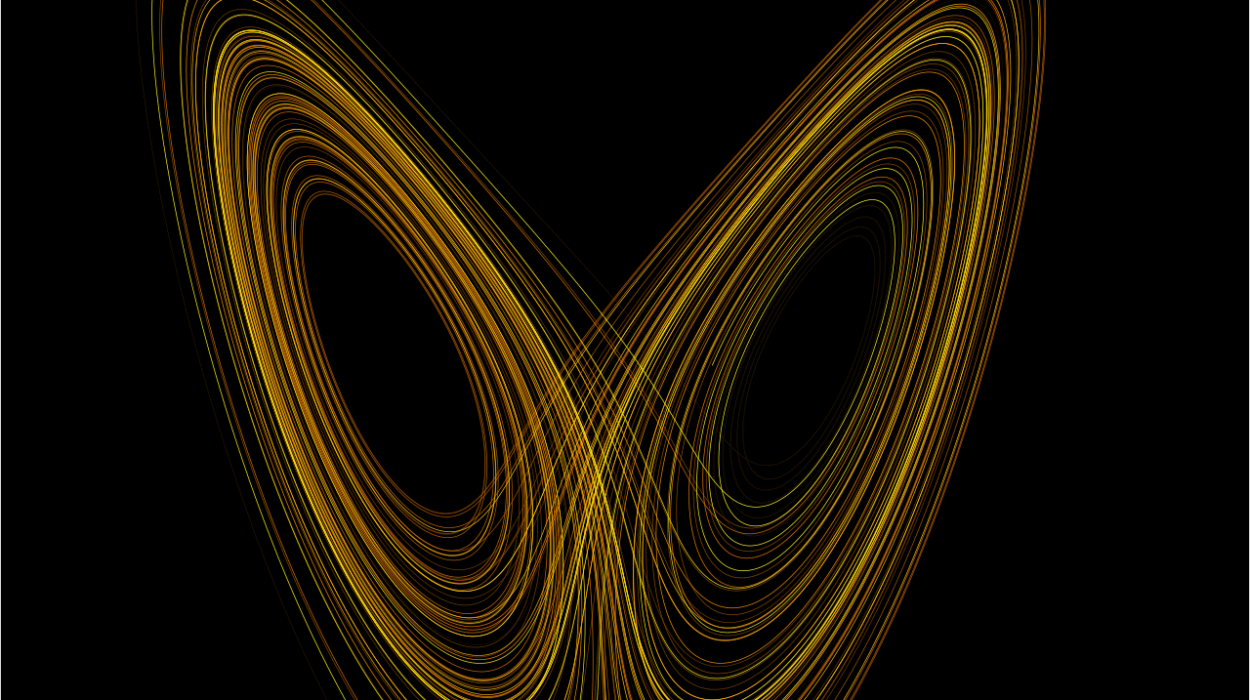Mathematics is the invisible foundation upon which all of computer science is built. Every algorithm, data structure, programming language, and computing system rests upon mathematical logic. Whether we are searching for information on the internet, encrypting a message, or training an artificial intelligence model, mathematics silently powers the processes that make modern computing possible. Understanding the mathematics behind computer science not only deepens our appreciation of how computers work but also allows us to think more clearly, reason more precisely, and solve problems more effectively.
Computer science is not simply about writing code or designing software. At its core, it is the science of information—how information is represented, processed, and transformed. Mathematics gives this science its structure, rigor, and predictability. From logic and algebra to probability and graph theory, mathematical concepts form the language that computers speak and the framework that defines their limits.
In this article, we will explore the essential mathematical ideas that shape computer science in an accessible way. Rather than delving into complex equations, we will focus on the intuition behind the math—how it connects to computing and why it matters.
The Relationship Between Mathematics and Computer Science
Mathematics and computer science share a deep, symbiotic relationship. Mathematics provides the formal foundation for computer science, while computer science gives mathematics a new medium for exploration, experimentation, and application.
At a fundamental level, a computer is a mathematical machine. It operates on binary digits—zeros and ones—that represent numbers, symbols, and logic values. Every instruction a computer executes is a mathematical operation: addition, comparison, or logical conjunction. The design of computer hardware, the architecture of processors, and the functioning of memory are all based on mathematical abstractions of numbers and logic.
Theoretical computer science extends this relationship further by using mathematics to define what computers can and cannot do. It studies algorithms—the step-by-step methods for solving problems—and classifies them by efficiency, complexity, and computational limits. Without mathematics, it would be impossible to determine whether a program will run in seconds or centuries, or whether a particular problem can be solved by any algorithm at all.
In practice, computer scientists use mathematics in many forms: discrete mathematics to understand structures like graphs and sets, linear algebra to represent data in machine learning, probability and statistics for data analysis, and calculus for optimization in artificial intelligence. In every domain of computing, mathematics provides the precision and tools needed to model, analyze, and predict outcomes.
The Foundation of Logic
The roots of computer science lie in logic—the branch of mathematics that studies reasoning and truth. Logic provides the foundation for programming, algorithms, and digital circuits.
Boolean logic, named after mathematician George Boole, is the simplest yet most powerful form of logic used in computing. It deals with two truth values: true and false, often represented as 1 and 0. Every decision a computer makes—whether to execute a line of code, store a value, or jump to another instruction—is based on Boolean operations such as AND, OR, and NOT.
Logical statements allow us to formalize reasoning. For example, “If it is raining, then the ground is wet” is a conditional statement that can be expressed symbolically as P → Q, where P represents “it is raining” and Q represents “the ground is wet.” Using truth tables, we can analyze how different combinations of truth values affect the outcome of such statements.
Logic also forms the basis for digital circuit design. The gates that make up microprocessors—AND, OR, NOT, NAND, NOR, XOR—are physical implementations of logical operations. Complex circuits can be built by combining these gates, just as complex arguments can be constructed from simpler logical propositions.
In programming, logic governs conditional statements like if, else, and while loops. These control structures allow computers to make decisions and repeat operations based on conditions that evaluate to true or false. Thus, the very act of writing a program is an exercise in applied logic.
Set Theory and the Language of Data
Set theory is another fundamental area of mathematics that underpins computer science. A set is simply a collection of distinct elements, such as numbers, characters, or objects. Sets are used to define data structures, databases, and even the concept of computation itself.
In programming, sets appear in many forms. Lists, arrays, and dictionaries are all ways of representing collections of data. Operations such as union, intersection, and difference—basic set operations—have direct counterparts in data manipulation tasks. For instance, finding common elements between two lists is equivalent to computing the intersection of two sets.
Set theory also provides the basis for relational databases, where information is stored in tables composed of tuples (ordered sets). The relational algebra used in SQL (Structured Query Language) is directly derived from set operations. When we query a database to find all users older than a certain age, we are effectively performing a set operation over the collection of records.
In theoretical computer science, sets are used to define languages, automata, and algorithms. A formal language can be thought of as a set of strings formed from a finite alphabet. Automata—abstract machines that recognize these strings—are themselves defined using set-theoretic concepts.
Understanding set theory helps computer scientists reason about data organization, optimize algorithms, and design systems that handle large-scale information efficiently.
Functions and Algorithms
A function is a mathematical relationship between inputs and outputs, where each input produces exactly one output. In computer science, functions play a similar role: they take data, perform operations, and return results.
Every algorithm—the step-by-step process of solving a problem—can be viewed as a complex function that maps inputs to outputs through a series of well-defined rules. For example, a sorting algorithm takes a list of numbers as input and returns the same numbers in ascending order as output.
Functions in programming embody the mathematical concept of abstraction. By defining a function, we encapsulate a specific task and can reuse it without worrying about its internal workings. This abstraction mirrors the mathematical principle of defining a function independently of its implementation.
Mathematics also provides tools to analyze the efficiency of algorithms. The concept of time complexity describes how the running time of an algorithm grows as the size of the input increases. Using asymptotic notation such as Big O, computer scientists can classify algorithms as O(n), O(log n), or O(n²), revealing how they scale with data. This analysis, deeply rooted in mathematical reasoning, helps developers choose the most efficient approach for solving problems.
Graph Theory and Networks
Graph theory, a branch of discrete mathematics, studies structures made up of nodes (vertices) connected by edges. It provides a powerful way to model relationships between objects, and it is foundational in computer science.
Graphs can represent anything from social networks and communication systems to transportation routes and the structure of the internet. In a social network, each person is a node, and each friendship is an edge. In a computer network, devices are nodes, and the connections between them are edges.
Graph theory enables the development of algorithms that analyze and manipulate these structures. For instance, the shortest path problem—finding the quickest route between two points—is solved using algorithms like Dijkstra’s or Bellman-Ford’s, both grounded in graph theory. Similarly, search engines rely on graph algorithms to rank web pages by analyzing how they are linked together.
Even abstract concepts such as dependency resolution in software compilation, resource allocation in operating systems, and neural network architectures in artificial intelligence rely on graph-theoretic principles. Understanding graphs allows computer scientists to model and solve complex connectivity problems efficiently.
Probability and Statistics in Computing
Probability and statistics play an essential role in computer science, especially in fields like artificial intelligence, machine learning, cryptography, and data analysis. They allow computers to reason under uncertainty, make predictions, and learn from data.
Probability theory provides the mathematical foundation for modeling randomness. It helps quantify the likelihood of events and form the basis for algorithms that handle uncertain information. For instance, spam filters use probabilistic models to estimate whether an email is spam based on the frequency of certain words.
Statistics extends this by providing tools for analyzing data and drawing inferences. In machine learning, statistical techniques are used to fit models to data, minimize errors, and estimate parameters. Linear regression, Bayesian inference, and hypothesis testing all stem from statistical mathematics.
Cryptography, the science of securing communication, also depends heavily on probability. Randomness ensures that encryption keys are unpredictable, making it difficult for attackers to guess them. Probabilistic reasoning is also essential in randomized algorithms, which achieve faster performance by introducing controlled randomness into computation.
By mastering probability and statistics, computer scientists gain the ability to build systems that adapt, predict, and make decisions intelligently in uncertain environments.
Linear Algebra and Data Representation
Linear algebra, the mathematics of vectors and matrices, is the language of modern computing. It is central to computer graphics, machine learning, data compression, and scientific computing.
In computer graphics, linear algebra enables the representation and manipulation of images and three-dimensional models. Transformations such as rotation, scaling, and translation are expressed as matrix operations applied to vectors that represent points in space.
In machine learning and artificial intelligence, data is represented as vectors and matrices. Neural networks, for example, are built from layers of matrix multiplications that transform inputs into outputs. The efficiency of these operations depends on the mathematical properties of matrices—determinants, eigenvalues, and singular values—that describe how transformations affect data.
Linear algebra also plays a key role in data compression and signal processing. Techniques like the discrete cosine transform, used in JPEG image compression, rely on matrix decomposition to reduce redundancy in data while preserving essential information.
Even search engines use linear algebra through algorithms like PageRank, which models the web as a huge matrix of connections and computes the relative importance of pages using eigenvector analysis.
Understanding linear algebra allows computer scientists to visualize and manipulate data at scale, making it indispensable for fields that involve large amounts of numerical information.
Number Theory and Cryptography
Number theory, the study of integers and their properties, might seem abstract, but it has practical applications in one of the most critical areas of computer science: cryptography.
Modern cryptography relies on mathematical problems that are easy to compute in one direction but extremely difficult to reverse without a special key. For example, multiplying two large prime numbers is simple, but factoring the result back into those primes is computationally hard. This asymmetry forms the basis of public-key encryption algorithms such as RSA.
Modular arithmetic, another concept from number theory, allows calculations to “wrap around” after reaching a certain value. It underlies the operations of encryption systems, digital signatures, and hash functions that protect information on the internet.
Number theory also informs error-detecting and error-correcting codes used in data transmission and storage. Techniques like cyclic redundancy checks (CRC) and Hamming codes ensure that digital information remains accurate even when transmitted through noisy channels.
Thus, the pure mathematics of prime numbers and modular arithmetic has become the cornerstone of digital security, enabling everything from online banking to secure messaging.
Automata Theory and Computability
Automata theory studies abstract machines that model computation. It provides a mathematical framework for understanding what computers can and cannot do.
An automaton is a simplified mathematical representation of a computing device that reads input, processes it according to a set of rules, and produces output. The simplest form is a finite-state machine, which can be in one of a limited number of states and changes states based on input symbols. Finite-state machines are used in text processing, language recognition, and digital circuit design.
Computability theory, closely related to automata theory, investigates the limits of computation. It asks fundamental questions: What problems can be solved by algorithms? Are there problems that no computer, no matter how powerful, can ever solve?
Alan Turing answered this by introducing the concept of the Turing machine—a theoretical model that defines what it means to compute. Turing showed that there exist problems, such as the Halting Problem, that are unsolvable by any algorithm. This discovery established the boundaries of computation and remains central to theoretical computer science.
Automata and computability provide the philosophical and mathematical foundation for all programming languages and computational models. They define not only what computers can do, but also what they fundamentally cannot.
Mathematical Logic and Programming Languages
Programming languages are built upon mathematical logic. They use syntax and semantics—rules of structure and meaning—that mirror formal systems in mathematics.
Predicate logic, for example, forms the basis of reasoning in artificial intelligence and knowledge representation. Functional programming languages like Haskell and Lisp are rooted in lambda calculus, a mathematical system developed by Alonzo Church to study functions and computation.
Type theory, another mathematical framework, ensures that programs behave consistently by checking the types of data they manipulate. This concept helps prevent errors and provides guarantees about program behavior.
By grounding programming languages in formal logic, computer science ensures that code can be analyzed, verified, and optimized systematically. This connection between logic and language continues to shape modern developments in compiler design, verification systems, and artificial intelligence.
The Role of Calculus in Computer Science
While discrete mathematics dominates computer science, calculus also plays a crucial role, particularly in fields involving change, optimization, and continuous systems.
In machine learning, calculus allows us to optimize models by finding minima and maxima of cost functions. Gradient descent, the core algorithm used to train neural networks, is based on differentiation—a fundamental concept of calculus.
In computer graphics and physics simulations, calculus models the motion of objects, the flow of fluids, and the behavior of light. Integration and differentiation describe how quantities change over time and space, enabling realistic animations and physical modeling.
Even signal processing and control systems rely on calculus to analyze and modify continuous signals. Fourier analysis, which decomposes signals into their frequency components, is an application of calculus that underpins technologies such as audio compression and wireless communication.
Calculus connects the discrete world of computing with the continuous world of nature, allowing computers to simulate, predict, and optimize real-world phenomena.
The Power of Abstraction in Mathematical Thinking
One of the most important contributions of mathematics to computer science is abstraction—the ability to focus on essential properties while ignoring irrelevant details. Abstraction allows complex systems to be broken into simpler layers, each governed by its own mathematical rules.
For example, when designing an algorithm, a computer scientist abstracts away from the hardware level and focuses on logical steps. When building a database, one abstracts from individual data entries to relationships and schemas. Each level of abstraction simplifies understanding and enables reuse of concepts across domains.
Mathematics trains the mind to think abstractly, to generalize patterns, and to reason logically. These skills are the essence of computer science.
The Interplay Between Theory and Application
The mathematics of computer science is not just theoretical—it is deeply practical. Every mathematical discovery eventually finds its way into technology. The algorithms behind search engines, encryption, machine learning, and computer vision all began as mathematical ideas.
Conversely, computational challenges inspire new mathematics. The need to process massive datasets, simulate complex systems, or model neural networks drives innovation in applied mathematics and numerical analysis.
This interplay between theory and application ensures that both disciplines continue to grow together, each enriching the other.
The Future of Mathematical Computing
As computers become more powerful, the importance of mathematics in computer science continues to grow. Emerging fields such as quantum computing, artificial intelligence, and data science depend on advanced mathematical frameworks.
Quantum computing, for instance, relies on linear algebra and probability theory to describe quantum states and their evolution. Machine learning continues to advance through innovations in optimization and statistical theory. Computational complexity and cryptography evolve with new mathematical insights into efficiency and security.
In the future, mathematics will remain the guiding light that defines what computers can achieve and how far human understanding of computation can extend.
Conclusion
The mathematics of computer science is the language through which we describe computation, reason about information, and shape the technology that defines our world. From logic and set theory to calculus and probability, every branch of mathematics contributes to our understanding of computers and their capabilities.
To study computer science without mathematics is to learn a language without grammar—it may be possible to speak, but not to express ideas clearly or deeply. Mathematics brings precision, clarity, and universality to computing.
Ultimately, mathematics is not just a tool for computer scientists—it is the very essence of computation itself. Every program, every algorithm, and every digital device is an embodiment of mathematical thought, transforming abstract ideas into the reality of the modern digital world.






